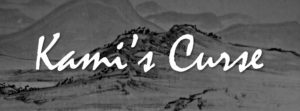Benjamin M. Weilert's Blog: BMW the Blog, page 2
July 4, 2023
The “Black Box” Approach to Editing
A piece of editing advice often given to writers is “Kill your darlings.” The feedback we receive from readers is important to identify these sections that don’t work. Even if we think it’s the greatest bit of prose we’ve ever written, these “darlings” have to go. If you’re lucky, these portions of your story added nothing to the overarching plot and can be easy to write around. However, what happens when the darlings you just killed leave tremendous gaps in your story?
Chances are, you’ve probably written the entire story before you gave it to someone to critique (at least, that’s how you should do it). You’ve likely spent a bit of time figuring out the logic of the plot, ensuring that actions result in your intended consequences. But if a key event in your plot isn’t landing correctly and you need to cut it, how do you stitch together what you have? How do you make it so you don’t have to start from scratch and rebuild the plot from the ground up?
 Most scenes have inputs and outputs.
Most scenes have inputs and outputs.Quite a few fields have the concept of a “Black Box.” Programming. Business. Engineering. Mathematics. The Black Box is something that we know what goes into it and what comes out of it, but not necessarily what’s in it. However, by using these entrance and exit criteria, we can often deduce what’s happening in the mysterious middle of the Black Box. The beauty is that sometimes these Black Boxes can have multiple solutions as long as it transforms the inputs into the correct outputs.
A well-written scene is like a Black Box. There should be some inciting incident that pushes the characters into the scene. Next, the action of the scene should transform the characters so they’re different upon leaving it. String enough of these Black Box scenes together, and you have a full plot. If a scene doesn’t significantly change the plot if it’s removed, then it’s easy to cut and patch the connecting scenes on either side together. When you need to replace a Black Box scene, then things can be more challenging—but not impossible.
What is the expected outcome?After receiving some significant criticism of my book, Buried Colony, I knew one of my “darling” scenes had to go. This scene had a lot of plots that hinged on its outcome, so I was initially depressed that I’d need to rewrite the whole book. I took some time to cool down before tackling this problem and realized that I just needed to rework the scene to remove the objectionable material. I also had to dial back one of my characters, which changed the inputs to the scene but not to the entire book. Ultimately, this scene had a particular outcome I was trying to achieve. Giving myself enough time to pivot to other projects allowed me to arrive at the eventual solution for this Black Box hole in my manuscript. It had some slight ripple effects throughout the plot that required me to tweak a few other scenes as well. The most important takeaway was that I didn’t have to rewrite everything.
Now, there are limits to this Black Box approach. If there are a lot of significant changes early in the plot or a character has to be altered drastically, you might need to consider doing a full rewrite. After all, being able to reproduce the intended outputs of a scene exactly can be difficult—if not impossible. These outputs are ultimately the inputs to the next scene, which leads to the next scene, and so on. If they’re a bit off, be sure to check your continuity to ensure a seamless scene transplant has taken place. This is sometimes how writers end up with characters who act “out of character.” Not carrying the effects of the modified scene through the rest of the story can cause this issue.
Using Black Boxes for planning.Extending the concept of Black Boxes past the editing phase can also be useful for story planning. Often, I’ll have a great idea for a scene that’s not connected to anything else in the story. By asking myself three simple questions, I’ve been able to connect these scenes to the larger plot.
What needs to happen to arrive at this scene?What does this scene need to accomplish?How does this scene lead to the next scene?You might iterate on this approach as you build the bridge between your new scene and the existing parts of the plot. As long as the inputs and outputs of these scenes make logical sense, it should prevent any potential plot holes that might arise from working in this new scene. Alternatively, you can also use this technique to battle writer’s block. If you’re stuck, just think about the next immediate thing that needs to happen, then just build upon that scene into the next one. When you reframe scenes as Black Boxes that fit together like puzzle pieces, it can be much easier to plan, prod, and polish your story into a finished product.
What scenes in your writing have been easy to cut? Difficult to cut?
What different actions can your characters take to arrive at the same result?
If you get writer’s block, are you looking too far ahead in your plot?
June 6, 2023
Using real places in your writing
 Google Maps in action.
Google Maps in action.The setting is a key foundation of any story. Without it, your characters are engaging with a plot in an amorphous location. Sometimes, ignoring the setting can lead to dialogue-heavy writing (or “talking head” syndrome). A simple way to ground your story in reality is to use actual places in your writing.
I’ve talked about how traveling to these locations helps add the needed realism to stories based on the real world. However, I also understand that not everyone has the time and money to go to a specific spot in a big city that they don’t live in. It’s certainly easy to use locations close to where you live, but not every story you write will likely be set in an easily accessible spot. Thoroughly researching these places you haven’t been to with Google Maps and travel guides is a simple way to overcome this limitation.
Convey the sensation of “being there”Ideally, though, visiting the location you want to use in your story helps add details that you just can’t get through internet research. For example, how long does it take to walk to this location (or use other transit options) and will your character be worn out by the time they get there? What does it smell like? Is it stuffy and humid? What common sounds would you hear while you’re there?
Of course, some genres—like fantasy—can’t directly use real-world locations. If a location isn’t 100% necessary to the characters or plot, then merely use an analog from what you know and where you’ve been. Sometimes, the feel of the location is more important and you can use your memories of a similar place you’ve been to and pull the needed senses into your writing. Case in point, the hotel used in Stephen King’s The Shining wasn’t directly the Stanley Hotel in Estes Park, Colorado. Still, the real-world location was a foundation for King to establish the feel of a haunted hotel.
You can’t fool the locals Outside the location I referenced.
Outside the location I referenced.There are times when—no matter how hard you try, and how much research you do—you can’t get a real-world setting right. It might be disappointing to visit a location you reference in your writing only to find that you got it completely wrong. Ideally, most people won’t care. If it’s some obscure, hole-in-the-wall place in a big city that’s not exactly right, only locals would know the difference between what you describe and what reality is.
For example, I referenced a coffee shop (Dollop Coffee) in my short story, “The Last Immortal” that was not how I described it. I had been to Chicago before, so I knew the feel I was going for and the general area where the main character lived. However, I finally got the chance to visit this small coffee shop years later. I found out that the pictures included in the Google Maps description were all wrong. The information I used to set my scene wasn’t correct to start with. I could have used a Starbucks, which has a pretty consistent layout everywhere, but I wanted that small, out-of-the-way shop to get the feel I wanted. Will anyone know I wrote this coffee shop wrong? Not likely, nor will they care I did.
 Not how I imagined it.
Not how I imagined it.One thing that sometimes annoys me about books set in places I’m familiar with (especially as a local) is how many things they get wrong. If you’re getting an 85% feel for your location, it’s probably good enough for people who haven’t been there. Alternatively, part of your research (aside from visiting yourself) can be to interview someone who does (or has) lived at the location you want to use. After all, if the goal of your story is to immerse someone in the setting, then you’d better be sure you’re getting it right.
Have you ever noticed an error in a story’s location?
How would you describe the place where you live?
What stories set in real places stuck with you?
May 2, 2023
The Basics of Making Your Own Cover
The biggest lie that has ever been told about books is that you cannot judge them by their cover. This is the first and sometimes only interaction people will have with your book, so you need to be sure that it looks professional. I have seen a lot of self-published covers over the years that leave much to be desired—my own books included. Online cover creators are an easy way to slap something on the book you’ve written, but the design limitations of these tools actually do more harm than spending the money to hire someone to make your cover. All this being said, there are some easy ways you can make your own cover as long as you avoid a few common mistakes.
Fonts Matter.At a minimum, there should be two boxes of text on your cover: your name and the title of the book. You’d be surprised to see some covers that don’t match the font for these two pieces of information. Rule of thumb is to use only a single font for your front cover. You might get away with another smaller font if you’re fortunate enough to have an author blurb on the front (making sure it’s from an author in your genre), but any more than two fonts make it look messy. The back cover can have a different font for the synopsis, but keep it to a similar font that you’re using for the text inside the book.
It’s important to note that certain genres almost have font requirements so that people know what genre your book is at a glance. For instance, a lot of fantasy has elegant, serif fonts whereas science fiction recently seems to be on a thin sans-serif kick. Thrillers always have bold impactful fonts and romances lean heavily on script-type fonts. Looking at some pre-made covers (which are fine to pay for and use if you’re stuck) can give you some ideas on what fonts to use. Ultimately, the font you use should be clear and readable against the background of the cover. Just be careful that it’s a font you can freely use—some have rights tied to them that might require you to purchase the font from its creator.
Keep it Simple.While there is nothing wrong with using stock photos for your cover (unless you don’t pay for them, in which case we have a problem), it takes a certain amount of Photoshop skill to integrate these pictures into a coherent cover image. If your readers can tell you’re using stock photos, then there’s a chance they have already identified your book as low quality and won’t even give it a chance. There’s nothing wrong with paying for art that you can use for your cover and just putting your name and title over the top of it. Just make sure it’s at least in the right genre. For example, I remember reading a coming-of-age high school romance that centered around soccer players, but the cover made it look like it was a manga. The story was pretty good, but the cover was misleading (fortunately, a second edition of this book fixed that issue).
Again, understanding where your text will go and how it will stand out from this background is key. Don’t clutter your cover with too many characters and other things if you really want it to pop. I’m definitely a fan of minimalism, which can make creating your own cover even simpler than you think. The fact that there are often other editions of famous books released with simple, minimalist covers shows that even well-known books can get away with this look. If they can do it, maybe you can too. Heck, there’s even a modern trend of just random blobs of color being the art for the cover. Here are some questions to help guide your design choices; should you choose the minimalist look: Can you distill your book down into simple geometric shapes or is there a solitary item that could explain your entire book? Simple is key to being understood at a glance.
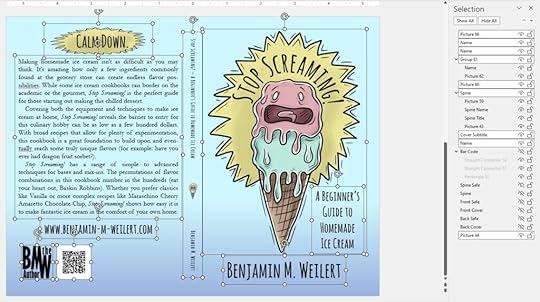 The cover for my next book. Yes, it’s PowerPoint.Use the tools you have.
The cover for my next book. Yes, it’s PowerPoint.Use the tools you have.One reason I used cover creators when I was starting out was that I didn’t know what tools I had to make covers. Photoshop is expensive, and even its free alternative GIMP can be overwhelming to learn. I also didn’t quite understand how to make a cover to the right size specifications that Amazon needed to print it without cutting off important information. Today, I’ve learned enough GIMP to get by and Amazon has great tools for identifying the measurements for books of different sizes and lengths. I have also found Canva to be an excellent resource as a much better (albeit limited) “cover creator” than the ones that came before.
A surprising tool I had access to was Microsoft PowerPoint. After making a small registry change in Windows that allowed me to save PowerPoint files as print-quality JPG images, I was able to use this program to make covers for my books. I actually find PowerPoint to be much easier to manipulate than Photoshop or GIMP. After all, these programs work on the concept of “layers” so PowerPoint’s ability to easily group, align, and adjust elements of the cover design keeps me coming back. In the end, all Amazon cares about is that the file is the right size and in the right format, so use whatever tool you have to make that happen.
In today’s online marketplace, having a cover that can instantly grab attention in a thumbnail size is important. The aesthetics of a cover can be instantly attractive or instantly off-putting—even in small sizes. If you have trouble understanding what bad covers look like or if you need help identifying issues with covers, be sure to check out Lousy Book Covers and Cover Critics. Money is sometimes tight and you can create the cover for your book, but there’s also no shame in letting someone more professional do it for you if you can find the budget for it.
What’s the worst cover you’ve ever seen?
What instantly attracts you to a book cover?
Can you tell if someone used a pre-made cover?
April 4, 2023
The Stages of Handling Criticism
Nobody’s perfect. As writers, all of us are on journeys to improve our writing. The best way to do so is to have our current writing criticized. Knowing what works and what doesn’t is best achieved through the lens of other people—your readers. While we can’t please everyone with our writing, we can at least try to take relevant and constructive criticism to make more readers happy. Ultimately, there are two stages of criticism: before you release a book and after you publish this book. Knowing how to handle both is key to improving your writing.
Use beta reading criticism to make changes.I’ve written about the four things I like my beta readers to provide for my drafts, but I’ll admit that it stings a little when a trusted source comes back and gives some harsh criticism of my story. Your first reaction might be to get mad. “These beta readers don’t understand what I’m trying to do!” you may tell yourself. Receiving criticism can be an emotional moment, so it’s important to take a step back and assess the feedback. Don’t immediately jump to the conclusion that the beta reader didn’t provide a good critique because they didn’t love everything about your draft. The point of a beta reader is to open your eyes to the blind spots in your manuscript that need improvement. If you’re feeling attacked by a beta reader critique, you must give yourself time to calm down before reviewing their notes and diving into edits. In fact, their notes might indicate what kind of editor you’ll need for the next polishing step (i.e., structural vs. line edits).
Many writing circles use the phrase “kill your darlings” to point out areas of a manuscript that don’t work for readers. As writers, there are scenes we absolutely love but distract from the story. If these scenes aren’t working for other readers, then you may have to face the fact that it’s a “darling” you’ll have to kill in revision. For example, there were portions of my memoir, Fourteener Father, that I felt were an important part of my life story, but my beta readers revealed were probably better for a session with a therapist. Similarly, I delayed publishing Buried Colony because of feedback I received on some Advanced Reader Copies (ARCs). I gave myself the extra time to kill these darlings, which made both books better. However, you should know that ARCs are a last chance to catch these things before letting the world have your story.
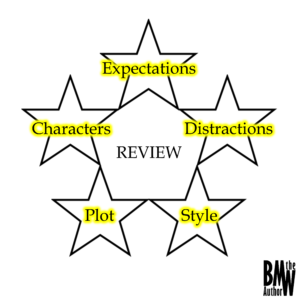 The 5 elements of a Review.
The 5 elements of a Review.As someone who reviews books, movies, and video games, I don’t like everything I review. Sure, there are some rare stories I deem to be the cream of the crop, but there are also stories that don’t work for me. And that’s fine. People can like what they like and not like what they don’t like. The saying, “You can’t please everyone” is never more prevalent than in the reviews section. While we always hope readers will give our work four or five stars, there inevitably comes the handful of one or two-star reviews. This criticism can be harder to deal with because the book is already out in the world in its final form—there’s no time to change it.
Fortunately, there are a handful of low-star reviews you can outright ignore. The internet is a nasty place, and if you’ve attracted a troll who derives pleasure in knocking your review score down a few points for no other reason than to watch you suffer, then there’s not much you can do about it than to let the work stand for itself. The same thing goes for people who give low marks because they couldn’t finish reading it or it’s not a genre they normally read. Again, you can’t please everyone. And while it’s hard to just completely ignore all reviews (good or bad), some negative reviews might be done with a modicum of constructive criticism you can use to improve your writing.
Don’t respond to negative reviews.One of the cringiest series of e-mails I have ever received was in response to a critical review I wrote of a book someone had written. It just didn’t work for me, but they felt obligated to send me several e-mails about how many other people liked it. They even came out of nowhere years later to gloat that the book I didn’t like was being adapted for film or television. Like, so? The fact I lived rent-free in this writer’s head for so long, maybe pushed him to make it into a better screenplay—which means my criticism worked even if they didn’t handle it that well. Ultimately, you are the writer, and you can ignore whatever feedback you receive. Even with beta reader feedback, you can give a “noted, ignored” as your response. Just know that if you are interacting with negative reviews in a space where other readers can see them, they often see your responses in poor taste.
Ironically enough, I don’t even consider reviews when I pick up a new book to read or a movie to watch. If the concept intrigues me, I’ll go through with it. Many readers will buy your book by the title and cover alone (or if it’s on sale), so don’t get hung up on 1-star reviews that most people won’t read, anyway. Heck, if you’re selling directly to people at a convention, there are no online reviews there either. I figure, once I’ve sold a copy of a book, the opinion of the reader is out of my hands.
How did you handle the first critical feedback of your work?
Are you finding beta readers you trust for their opinion, or do you need new critique partners?
Do you use reviews to determine if you’ll try a new book?
March 7, 2023
Two Creative Certainties: Taxes [PART 2/2]
It may come as a surprise that taxes are marginally easier than death when you’re a creative individual. While the latter requires explicit and detailed instructions on what to do upon your passing, the former is something you can control and often doesn’t involve more than a few extra forms when you’re filling out taxes for the year. Still, if you are selling anything that you created, the government will want a cut of that income. The one thing to be careful of here is that often this endeavor is considered a “hobby” instead of a business. If you want this extra income to be a business, it needs to be making a profit on an annual basis for many years. Consider how much you spend on stocking your inventory of products, advertising, and the variety of other costs that contribute to your creativity before determining if you’re even in the black when it comes to your business (which will require a Schedule C and adds extra scrutiny to your taxes).
If you exclusively stick to online selling through retailers like Amazon, Smashwords, or Lulu, there’s nothing more you need to do than to include the 1099-MISC forms from these platforms in the annual filing of your federal taxes. These royalties are considered income as long as you made more than $10 in the last year. Be sure to check in the Taxes sections of the websites you use to distribute your work to ensure you have collected all the 1099-MISC forms you need. Additionally, if you have an agreement to sell your creative works in a brick-and-mortar location, they should send you a 1099 as well.
Selling physical copies directly is…complicatedSo far, taxes for selling your creative works exclusively online is simple. Things get a bit more complicated once you start to sell physical products. If you’re regularly selling in the town where you live (like at a farmer’s market, for example), you’ll likely want to get a local sales license to do so. This license lets the town know that you’re selling something that needs taxes remitted to them on a regular basis. Similarly, if you are selling at events (like conventions), you’ll need to be sure to have special event tax licenses as well. None of these licenses are particularly expensive, but you should consider including them in your costs if you’re trying to make a business out of selling your work.
 Photo credit: Kelly Sikkema via Unsplash
Photo credit: Kelly Sikkema via UnsplashHere’s an example from my own experience. I have a sales license for the town where I live, and I also obtained a special event license from my state to collect taxes for a Comic-Con that happened during the summer. Do these things before the event. After the event, I add up all the sales I made and apply the local and state tax rates to these sales. Using the online portals for the local and state revenue departments, I declare how much I sold at the event, then I pay the taxes for the event (which is often calculated for you—but you should keep track of these numbers yourself to make sure they match). If I happened to have several events in the state, I can also wait and submit my taxes for these events on a quarterly or annual basis instead (be sure to check your specific town’s and state’s requirements). The important thing here is to keep track of what you’ve sold and when so you know what to submit to your local and state tax authorities. This total will also come in handy when you file this extra income for your annual federal taxes as well.
Cut into profits, or charge the customer?The best way to consider taxes when you’re selling your creative wares is that it’s a fee you should account for with every sale. Just like how Square or PayPal charges a fee on each credit card transaction you make with them, taxes may cut into your profits. Depending on the markup of what you’re selling, you can probably absorb these small percentages in the overall price of the item to keep it consistent with any online marketplaces where you might be selling the same thing. Alternatively, you can add these taxes and fees onto the price of the product and have the customer pay this sales tax directly.
When I’m selling at conventions, I generally use a flat, even number price for people paying with cash. I still have to pay taxes on that sale, even if I didn’t charge the customer for that tax. Generally, I find it easier not to have to deal with coin-based change and stick with only whole dollar amounts when people pay with cash. However, if customers want to pay with a credit card, I add the taxes on top of the base price so that the taxes are covered in the sale. This is easy to set up in Square and PayPal and is done automatically when these services calculate the total cost of the sale (just make sure that the state and local taxes are included in the overall tax rate for the location where you’re selling). I could add the credit card processing fee to the base price as well, but I’ve decided just to let that small amount come out of the profits of each sale.
Taxes don’t cost that muchWhile you might make hundreds of dollars selling your creative products in a year, taxes might only account for a few dozen dollars that you’ll have to pay to the government. I know that monetizing a hobby is often an endeavor with razor-thin profit margins—if you even manage to pull yourself out of the red—but you really shouldn’t ignore paying taxes on it. In this digital age, it’s actually quite simple to calculate and pay taxes. It doesn’t take more than a few minutes to do, and it doesn’t cost as much as you think it might. After all, taxes are inevitable when you sell anything you’ve created.
How much do you charge for your work?
Should you adjust the price of your product to account for taxes?
Do you know what the state and local tax rates are for your location?
February 7, 2023
Two Creative Certainties: Death [PART 1/2]
 Before the recent birth of my second child, my wife and I were preparing for this new life coming into the world by ensuring that our kids would be financially secure upon both of our deaths. While we’re only in our late-30s, it’s difficult to consider both of us dying unexpectedly in the near future. And yet, we have had close friends who were about our age pass away suddenly this last year, so we know it can happen.
Before the recent birth of my second child, my wife and I were preparing for this new life coming into the world by ensuring that our kids would be financially secure upon both of our deaths. While we’re only in our late-30s, it’s difficult to consider both of us dying unexpectedly in the near future. And yet, we have had close friends who were about our age pass away suddenly this last year, so we know it can happen.
When setting up a will or trust for your next of kin, there are a lot of assets that are easily included in these documents. Houses, investments, retirement accounts, and bank accounts. However, there is one thing a creative person needs to consider when planning for their death: what happens to the rights to their creative works? If you traditionally publish, some of these details may be already covered in your contract. If you self-publish, now might be the time to think about what to do.
What happens to your creations when you’re gone?With the ease and autonomy of Print on Demand (POD) self-publishing, people can still buy your books after you are dead. If you want people to still purchase your works, then they’ll still earn you royalties that might go to bank accounts that would be closed upon your death. You’ll need to provide instructions and passwords so someone can get into your account and redirect the e-mails, bank accounts, and tax information to their own accounts so they can still receive royalties. This may be the best option for someone who doesn’t need to distribute the royalties to your books among a group of people. You don’t want people fighting over something like your royalties after you’ve died.
Alternatively, if you have provided the ability for your next of kin to access your accounts, you can have them de-list your books from these services. Un-publishing is fairly easy on these platforms and is likely the simplest way to handle your books after you are gone. This means that any physical copies of your books that remain out in the world may become collector’s items, but it’s unlikely that a self-published author would be famous enough for that to be a troublesome outcome.
While it may take a bit more work, you might consider a Springing License through Creative Commons for your books. This way, you’d still get royalties for your books while you’re alive, but once you die, your works will transfer into the public domain. Be sure to research what it takes to enact this kind of Creative Commons License and let those you leave behind be aware of what they need to do to make it happen.
Death is a Legal MatterWills and trusts are legally binding documents. Legal documents should be written to make it clear what happens when these contracts are triggered. Similarly, if you went the traditional publishing route, the contract you signed for that process likely has clauses built in that cover what happens when you die. As with all legal documents, make sure you read these contracts carefully and understand them before you sign. Depending on how your publishing contract is set up, rights may revert to the publisher when you die and your surviving family might not see any more royalties from your work.
After you’ve thought long and hard about what you want to happen with your creative works when you’re gone, consider writing up an action plan. You might want a lawyer to look over it and a notary to sign it, so there’s no question about what your intentions are when you are no longer physically present to enact them. You can include these kinds of statements in your will or trust—which you’ll want to have a lawyer look over and a notary sign, anyway.
Death can take us by surprise, so it’s best to think about what happens when you’re gone now so you can plan for it. Surviving family members might not know how you want these things handled, or it may be too overwhelming for them to figure out on their own. Do them a service by creating a plan for all your assets, including the creative ones.
When you die, what do you want to happen to your books?
Does your family know what you want to be done with your books?
Can you describe to someone the process of changing your account?
January 3, 2023
Almost Free in 2023
Four years ago, I started writing down the projects I planned to accomplish during the year. This accountability was great to keep me on track. There’s something about declaring the different goals for the year, especially when you can finish at least a few of them. For 2023, I’m finally reaching the end of some bigger projects I started a few years ago. This means I’m almost free of the obligations I put myself under. With a new infant in the house, it’ll be interesting to see how much I can get done this year. Here’s what I currently have planned:
Stop Screaming
I’ve been getting some good feedback on the recipes from my ice cream cookbook, Stop Screaming. I’ve made some changes to a few of the recipes and how they’re collected in the book, so there are only a few left that need testing prior to going live with it sometime this year. Since this is a somewhat smaller passion project, I don’t feel as stressed about it than something I’ve put a lot more effort into (like last year’s Buried Colony). Still, this book is filled with the love of ice cream that my wife and I have developed for almost an entire decade and we can’t wait for you to read it and try out the recipes yourself.
The Third Degree: 10th Anniversary Edition
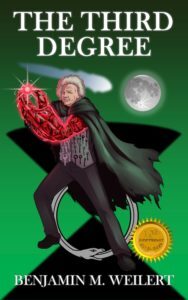 It only makes sense that after two years of releasing 10th Anniversary Editions of the first two parts of the Fluxion Trilogy that I’d finish strong with The Third Degree this year. By now, I already have all the art I commissioned from the extremely talented Robin Childs. The process I used for the last two years is well-defined and I’m confident the last part of this trilogy will not provide the challenges that last year’s 10th Anniversary Edition did. Plus, The Third Degree is the shortest of the three books in this trilogy, so recording the audiobook should be easier than in years past. Look for The Third Degree: 10th Anniversary Edition to be released at the beginning of June.
It only makes sense that after two years of releasing 10th Anniversary Editions of the first two parts of the Fluxion Trilogy that I’d finish strong with The Third Degree this year. By now, I already have all the art I commissioned from the extremely talented Robin Childs. The process I used for the last two years is well-defined and I’m confident the last part of this trilogy will not provide the challenges that last year’s 10th Anniversary Edition did. Plus, The Third Degree is the shortest of the three books in this trilogy, so recording the audiobook should be easier than in years past. Look for The Third Degree: 10th Anniversary Edition to be released at the beginning of June.
Be Fruitful…
This short story that was originally published in the Welcome to the Alpacalypse anthology will be getting its own release on Easter this year. While I wrote this story about the end of the world prior to the 2020 pandemic, the events it describes take place between Thanksgiving 2022 and Easter 2023. It only seems fitting to release it as a standalone eBook on Easter to commemorate the falsely predicted end of the world. Plus, I may even have a secret project releasing the same day based on the same idea of exponentially reproducing rabbits.
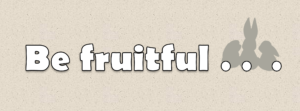
The Constellation Tournament
I received some critical feedback on this science fantasy trilogy in 2022 and will likely be using this criticism to polish up these books so I can start releasing them starting in 2024. If you’d like to provide some feedback prior to this April on the whole trilogy, please let me know as soon as possible by e-mailing me at info@benjamin-m-weilert.com.
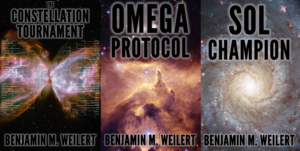
The Princess of Midnight (Exiles Book #1)
While I originally was going to start this high fantasy trilogy last year, I didn’t feel that the worldbuilding was strong enough for me to write it during NaNoWriMo. I plan to dig into more of the worldbuilding for this trilogy this year so I can write The Princess of Midnight this November. Using the Save the Cat method, I already have a good idea of what the plot will look like, so this extra preparation will merely help me weave a convincing first draft when I finally get around to writing it. By putting in the work this year to establish the world in my head, the next two years should be easier when I draft The Magician of Mountains and The Fugitive of Forests.
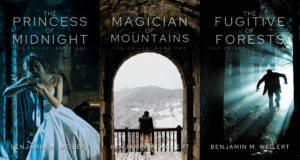
Blogs
There’s a lot to learn about self-publishing books, and I hope to enlighten writers who are starting out with this year’s blog posts. Some of the topics I currently have planned have to do with handling criticism, the basics of creating your own cover, and using real places in your writing. Stay tuned!
December 6, 2022
What did I do in 2022?

After a few years of the pandemic, 2022 felt like a return to some norms for me. Conventions were back in full swing, and I could engage with a lot more people in person compared to 2020 and 2021. I was still quite busy getting new stories out—as well as providing new forms to classic ones. I expanded my engagement with local stores this year and now have my books available for purchase at Young Bookworms in Colorado Springs, while still continuing my partnership with Sanctuary Inspired Goods in Old Colorado City. In case you missed any of my announcements this year, here’s everything I did…
2022 YEAR IN REVIEWSecond to None (10th Anniversary and Audiobook versions)
 Having completed the 10th Anniversary edition of last year, it was only natural that I continue with the 10th Anniversary edition of Second to None. This expanded version includes character sketches by Robin Childs, the relevant portions of the appendix from the Fluxion Trilogy collection, and a reworked portion of Chapter 4 (aka “the sideways chapter”). Similarly, now that I figured out my process for making audiobooks, I eventually got the Audiobook version of this book up on Audible. It’s also available as a digital download, 6-CD set, or USB flash drive.
Having completed the 10th Anniversary edition of last year, it was only natural that I continue with the 10th Anniversary edition of Second to None. This expanded version includes character sketches by Robin Childs, the relevant portions of the appendix from the Fluxion Trilogy collection, and a reworked portion of Chapter 4 (aka “the sideways chapter”). Similarly, now that I figured out my process for making audiobooks, I eventually got the Audiobook version of this book up on Audible. It’s also available as a digital download, 6-CD set, or USB flash drive.
Buried Colony
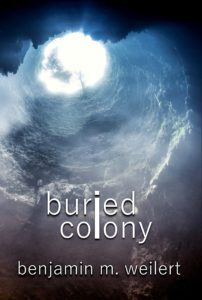 After a self-imposed delay in 2020 to fix some issues with this manuscript, I finally released my hard sci-fi novel, Buried Colony, this year. Written in 2017, I kept seeing portions of my vision of the future come to fruition with each year that passed. I had to get this book out, and this was the year it finally happened. If you’re a fan of Andy Weir’s books (like The Martian and Project Hail Mary), you’ll want to pick this one up. Buried Colony looks at some challenges of using current cutting-edge technology to transport humans outside our solar system. Challenges like how to deal with artificial intelligence, let alone the varied cultures of the explorers sent to the far end of the galaxy.
After a self-imposed delay in 2020 to fix some issues with this manuscript, I finally released my hard sci-fi novel, Buried Colony, this year. Written in 2017, I kept seeing portions of my vision of the future come to fruition with each year that passed. I had to get this book out, and this was the year it finally happened. If you’re a fan of Andy Weir’s books (like The Martian and Project Hail Mary), you’ll want to pick this one up. Buried Colony looks at some challenges of using current cutting-edge technology to transport humans outside our solar system. Challenges like how to deal with artificial intelligence, let alone the varied cultures of the explorers sent to the far end of the galaxy.
The Forgotten Shifter Files (Kami’s Curse)
One reason I wrote Autocomplete for my 2021 NaNoWriMo challenge was that I had a few short story ideas I wanted to get out of my head. As luck would have it, I expanded one of those stories, Kami’s Curse, into a novella that was published in The Forgotten Shifter Files anthology this year. This anthology doesn’t have your standard werewolf fare but focuses on different shifters like Kami—a young girl whose body can turn into paper and who uses this power to fold into different animal shapes to enact her vengeance on the man who killed her family.
The Physics of Equus Monoceros
Using what I wrote in the Autocomplete story that answered the question, “Are narwhals nars or whals?”, The Physics of Equus Monoceros focused on a woman trying to complete her mother’s research on the link between narwhals, rhinoceroses, and unicorns. While this short story didn’t make it into the anthology I submitted to this year, I’ll keep it around and will eventually publish it in another short story collection (a la The Ascent of the Writer) if it doesn’t get picked up in the next few years.
Goldie Locksmith
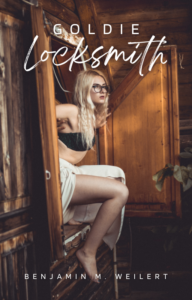 My 2022 NaNoWriMo project, originally titled Architect, evolved from a thriller into more of a romance as I wrote it. The result was the steamy Goldie Locksmith. This year, I used the Save the Cat method to outline this book. The plot remained close to what I envisioned, but the “thriller” bits didn’t seem as thrilling as I thought they would be since I ended up focusing more on the relationship between the two main characters. Still, I like this modified “Goldilocks and the Three Bears” retelling and will let it sit for a bit before I go in and make the needed adjustments so that I can send it off to some beta readers to strengthen its romance genre ties.
My 2022 NaNoWriMo project, originally titled Architect, evolved from a thriller into more of a romance as I wrote it. The result was the steamy Goldie Locksmith. This year, I used the Save the Cat method to outline this book. The plot remained close to what I envisioned, but the “thriller” bits didn’t seem as thrilling as I thought they would be since I ended up focusing more on the relationship between the two main characters. Still, I like this modified “Goldilocks and the Three Bears” retelling and will let it sit for a bit before I go in and make the needed adjustments so that I can send it off to some beta readers to strengthen its romance genre ties.
Blog Posts
Now that I’ve realized my blog focus is mostly about being an indie author, I had plenty to write about this year:
January: 2022—More of the SameWhile I published the two books I wanted to this year, it took a while to figure out some projects, putting them on the back burner for later.February: Selling Books in Brick-and-Mortar Stores
You don’t have to be traditionally published to have your books in physical stores. Here’s how to do it.March: The Case for Conventions [PART 1/2]
Selling online can be a challenge, which is why selling at conventions has a personal connection that is quite rewarding.April: The Case for Conventions [PART 2/2]
When you’re around other authors (or artists) at a convention, it’s a great way to network and expand your reach to other readers.May: Audiobooks by the Author
Professionally narrated audiobooks are great, but authors who record their own can sometimes cut down on rework.June: Writing Shouldn’t be Solitary
We all write words alone, but developing or joining a community of writers is key to remaining encouraged in the hard times.July: You Should Write Short Stories
Need to test out an idea? Want to try writing a different genre? Short stories are a great way to explore stories and get your work out there.August: Expand Your Writing with Different Genres
You might have a great idea for a story, but it doesn’t fit in the genre you usually write. Don’t limit yourself to just one genre!September: Be a Voracious Consumer of Stories
Writers should definitely read, but movies, TV shows, and video games are ripe with excellent stories as well.October: Why NaNoWriMo Works for Me
A concrete goal with a firm deadline that only takes up one month of the year? That’s how I get my first drafts done and still live my life.November: What is the scope of your success?
Chasing success might lead to heartbreak, but it also may be a motivator to extend yourself and push your limits.
With a newborn joining my family in the next month, I’m unsure how many of next year’s writing goals will pan out. There are a few surprise projects I want to do early in the year, but we’ll see if my sleep-deprived state will allow for such things. Either way, tune in for what I have in store for 2023.
November 1, 2022
What is the scope of your success?
An argument I often see in the writing community is how to define specific terms. Some examples are “When am I considered a writer?”, “How long should my novel be?”, and “Do I have to be traditionally published to consider myself an author?” Ultimately, many of these questions have one key concept: success. Just like how there are many genres out there, there are differing ideas on what constitutes a writer’s success. This can either be a significant motivator or a source of endless depression, so let’s look at how to measure the scope of a writer’s success.
What are your goals?I decided to take my writing more seriously in 2017. After cutting my teeth on the self-publishing process for a few years, I released the second edition of my debut trilogy and set a goal for myself to publish at least one book each year. Even though this goal brought me some stressful moments (and motivated me to seek therapy for it), I still think it’s an achievable goal for me. I ultimately enjoy the self-publishing process, so when I lost focus of that goal and started comparing myself to other authors’ “success” via sales or reviews, I inevitably strayed from my own scope of success.
Goals can also be challenging to achieve if other people are involved. Personal goals are generally easier to accomplish, as the only individual who influences whether they met the goal is the one who set the goal. Some goals require other people. For example, becoming a bestselling author through traditional publishing requires a writer to have reliable beta readers or critique partners, endure the querying process to have an agent pick them up, then hope that enough readers will want to buy their book once a publishing house releases it. There are plenty of steps in this process that rely on other people for this level of success to happen. That’s not to say that it’s not achievable, it just requires a lot of things to happen that are often outside the author’s control.
 If winning an award is the goal, what happens when we fall short?
If winning an award is the goal, what happens when we fall short?Defining success as an author by the number of books sold or winning an award is a lofty goal by any means. It is good to push ourselves to achieve something that’s beyond our current skill level. Having short-term and long-term goals is a smart way to break up success into bite-sized achievements. However, pursuing sales as a measure of success can be an expensive endeavor. Sure, traditionally published books will sometimes have marketing budgets from the publisher, but the publisher often reserves these funds for known names that are guaranteed to be a good return on investment. It has been said that you have to “spend money to make money,” and paying for marketing (especially for self-published books) can sometimes be a gamble. Maybe you didn’t use the right keywords. Perhaps you weren’t focusing your funds on the right demographic. It can be one more expense that needs to be accounted for to break even or turn a profit. If you’re looking to make a living on writing, be sure that you have a solid plan for how to do it.
What is the one thing you hope to accomplish with your writing? Others may scoff at you for not measuring up to their idea of success, but as long as you’re focused on what you define as success, then you’re on the right path. Maybe you only want to release one solid book—like Harper Lee and To Kill a Mockingbird. Perhaps you’re trying to get your ideas written and out in the world as fast as possible—like Stephen King. Even if you don’t plan to publish, just finishing a manuscript that nobody else will read is a measure of success if you want it to be. Understanding that some success relies on elements beyond talent (like luck) can either motivate you to push the odds in your favor or reduce the stress of trying to achieve something that might not be in the cards at the moment. In the end, you define your success.
What authors do you consider “successful?”
Who do you need to achieve your success?
What are your short-term goals? Long-term?
October 4, 2022
Why NaNoWriMo Works for Me
Just over a decade ago, I had never thought about writing a novel. As someone who had only written short stories up to that point, something like a novel felt so big and insurmountable to me. Then, talking with my cousin at Thanksgiving, I learned about National Novel Writing Month (or NaNoWriMo for short). Since then, I have participated and won the challenge 12 times in a row and am now nine years into my role as a Municipal Liaison (ML) for my local region. I almost exclusively write the first drafts of my novels during this annual challenge, and I have published at least five manuscripts that started out as a flurry of late nights writing in November.
Before we continue, let me set the stage by answering the first question many people have: what is NaNoWriMo? Founded in 1999, the NaNoWriMo challenge is to write 50,000 words of a first draft of a new novel in the 30 days of November. This does not mean the plot of said novel is complete with 50,000 words, but the goal is to develop daily writing habits to get words on the page that can go through the editing process later. Finishing the challenge is based on the honor system, as nobody (other than the author) checks, reads, or publishes the words written for NaNoWriMo.
While participating in NaNoWriMo is almost a habit at this point, there are many reasons I keep coming back to it when I want to write a new book. First and foremost, 50,000 words is a concrete goal and writing these words in a month is a concrete deadline. As someone who loves data, I enjoy tracking this goal via my spreadsheet graphs because the 50,000 words can be discretely divided into 1,667 words written in each of the 30 days of November. Overall, NaNoWriMo follows most of the S.M.A.R.T. goal outline by being…
Specific: writing a first draft of a novelMeasurable: 50,000 wordsAchievable: it only requires 1,667 words written each dayRelevant: depends on the writerTime-bound: 30 days of NovemberAfter I completed NaNoWriMo the first time—finishing the 50k words with one day to spare—I knew it was something that could be done. Since it took care of the brunt of writing a first draft, I figured I could then write whatever novel I wanted to by adhering to the NaNoWriMo formula. However, even if I could apply this to other months of the year, I only write my first drafts during these November events. Why is that?
As I wrote a few months ago, writing should not necessarily be a solitary activity. While having a S.M.A.R.T. goal with NaNoWriMo is nice, one of the best motivators for me is the community aspect of the event. I may sit at home late at night, typing away on my laptop, but I am connected to a large community of writers who are doing the same thing I am. We are all living life and trying to release the story in our heads. Some days are good, some days are bad, but we are all in it together. Plus, finding a writer who is ahead of you on the road to 50k is a great motivator. You want to write more than them, and the competition (even if they are unaware of it) is a great push to keep writing. It’s a moving milestone that might get me close to the next even thousand words, or the next day’s word count goal, thus pushing me toward that hefty 50,000-word goal.
NaNoWriMo is about the people and the process.Ultimately, NaNoWriMo is about finding the time to write. We all have busy schedules in our lives, so dedicating a few hours to writing might seem impossible. And yet, sacrificing some time scrolling social media or streaming a TV show can produce results. It also helps my family to know that I only need one month out of the year where I dedicate my evenings to writing instead of isolating myself from them for the entire 12 months. I can easily crank out the needed 1,667 words for a day in about 90 minutes, but I usually have to wait until my family goes to sleep so I can have that dedicated time to write. Even if I’m ahead of the needed words for that day, I still sit down and put an additional 1,667 words into my manuscript. Giving myself a buffer just in case I have a bad day has allowed me to develop the writing habits I needed to finish the 50,000-word goal in about 14 days (on average). These are just some techniques I’ve used to develop my writing over 13 years of NaNoWriMo.
I always encourage anyone who says that they want to write a novel “someday” that the NaNoWriMo challenge can be that someday. If you’re looking for a buddy to join you on your NaNoWriMo journey, I am BMW the Author. Since I also co-run NaNoWriMo for the Colorado Springs region, you are welcome to join our Discord server and engage with this great community of writers.
Have you written a novel before? Do you want to?
What techniques do you use to develop your writing habits?
Where can you find an extra 90 to 120 minutes a day to write?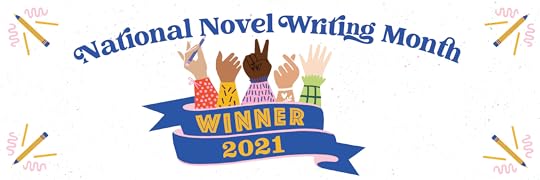
BMW the Blog
- Benjamin M. Weilert's profile
- 27 followers


